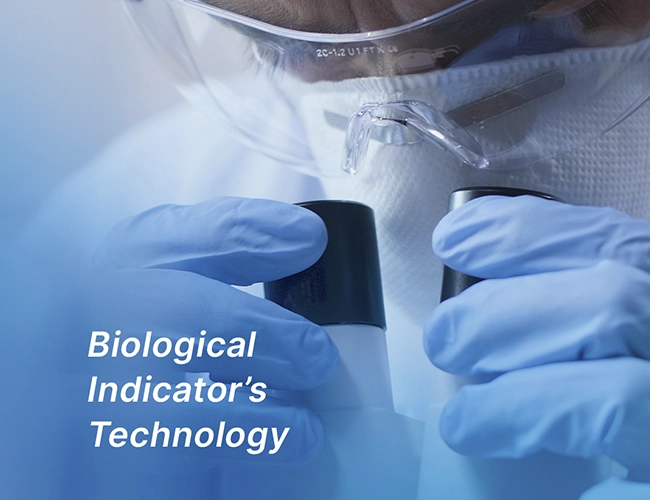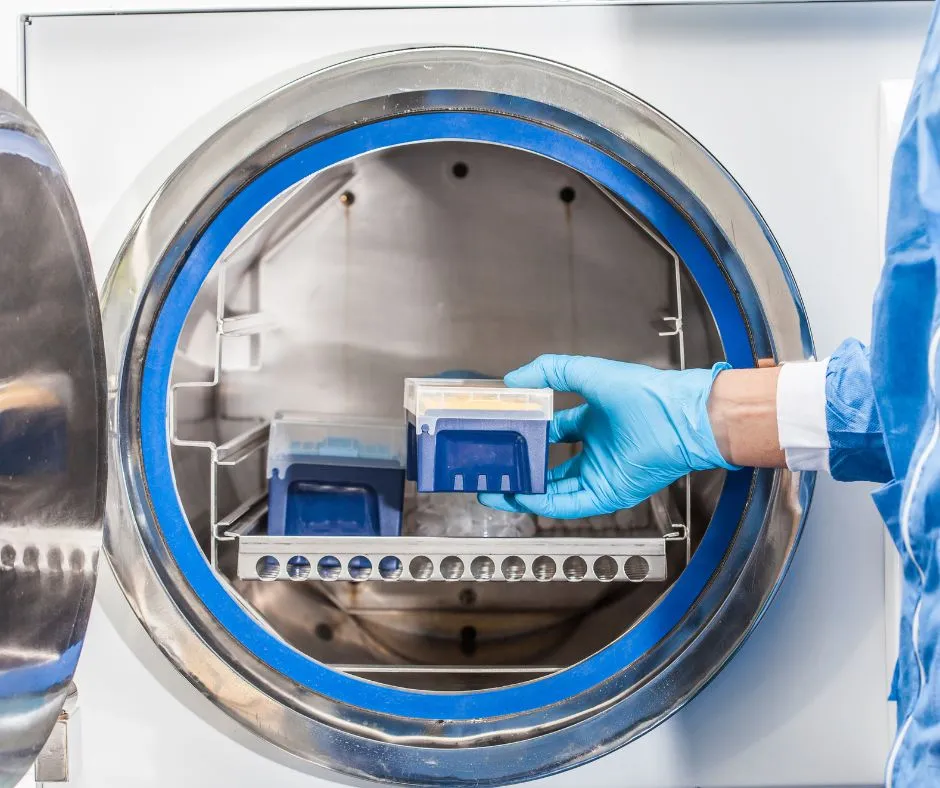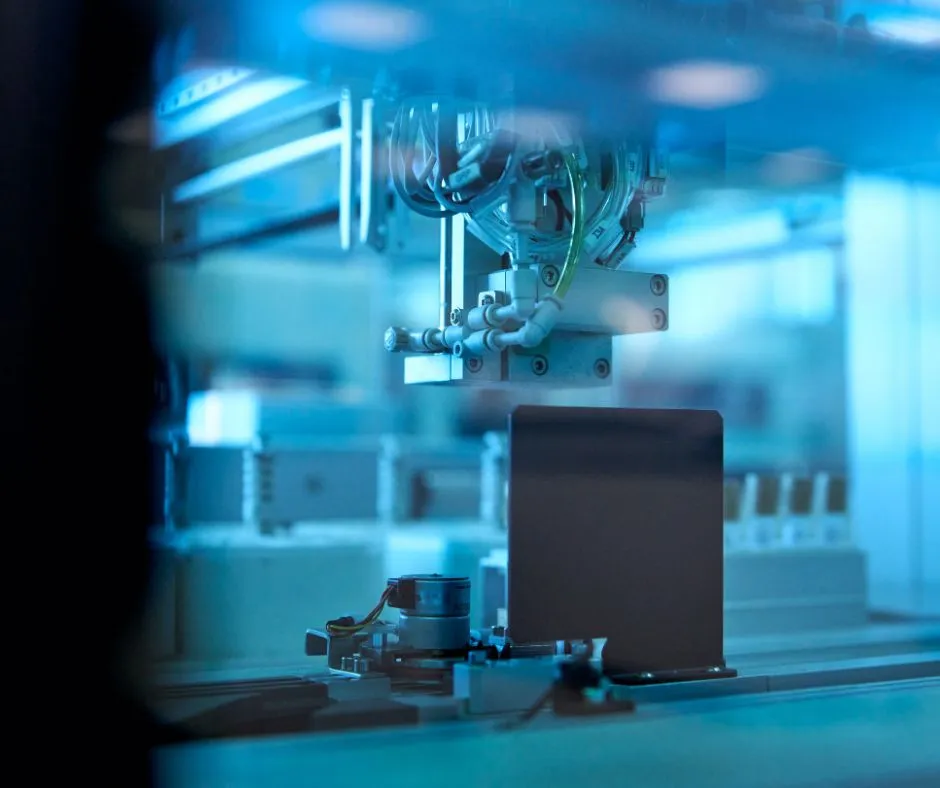Material and Sterilization Central (MSC) are departments or units inside hospitals or other health institutions responsible for cleaning, sterilization and distribution of equipment and medical instruments utilized in healthcare.
Besides that, they also manage the equipment and instrument stock, ensuring that all healthcare professionals have what they need when they need it. The MSC role is crucial to prevent hospital infections, that can many times be caused by contaminated materials.
Therefore, the sterilization process must be rigorous and follow the protocols and norms established to ensure the elimination of the microorganisms. It is a fundamental sector in a hospital, for it ensures the quality and safety of the materials that get into contact with patients.
MSC’s main activities
1 – Reception and cleaning of medical instruments and equipment
The utilized materials are received, classified, and submitted to a careful cleaning to remove organic and inorganic residues.
- Reception
Identification of the Materials
As soon as the materials arrive, they are identified and categorized according to their type and function. This can include, for example, the distinction between surgical instruments, materials of clinal use or monitoring equipment.
During this phase, the damaged items are discarded or sent to maintenance, avoiding passing through all of the cleaning and sterilization process needlessly.
Adequate registry documentation
Adequate documentation is maintained in each batch of received materials. This helps with the tracking and quality control, ensuring that all items are processed according to the protocols.
- Cleaning
Organic residue removal
The initial cleaning has the objective of removing organic residue (such as blood and tissues) and inorganic (such as lubes and other chemical products) from the materials. This phase is essential because residues can interfere in the efficiency of the subsequent disinfection and sterilization.
Cleaning Methods: Depending on the material and contamination nature, different cleaning methods can be applied. This can include a manual wash with brushes and detergent solutions, or the usage of ultrasonic washing machines, which utilize high-frequency vibration to remove residue in areas of difficult access.
Washing: After the cleaning, the materials are carefully washed to remove any detergent or cleaning solution. Adequate washing is crucial, for cleaning solution residues can be toxic or can interfere with the disinfection and sterilization processes.
Drying: The drying is the last step of the cleaning phase. Ensuring that the materials are completely dried is essential, for humidity can be a propitious medium for microbial growth and can interfere in the sterilization efficiency.
2 – Disinfection of the materials
These materials are submitted to a disinfection process, that can be thermic or chemical, to eliminate pathogenic microorganisms.
- Procedure and Disinfection
- Immersion in the disinfectants
Materials sensible to heat can be completely immersed in disinfection solutions for a specific period, according to the recommendations of the manufacturer.
- Direct application of the disinfectant agent
In some cases, the disinfectant agent can be applied directly to the material’s or equipment’s surface, whether it is by pulverization or with a humid piece of cloth.
- Time of contact with the disinfectant
The time needed for the disinfectant to efficiently act varies according to the product and type of microorganism that is being targeted. It is crucial to follow the manufacturer’s recommendations to ensure the efficiency of the disinfection.
3 – Preparation and conditioning of the materials
To ensure efficient sterilization, it is crucial that the materials are properly prepared, packed, and identified before the process. The preparation involves the cleaning and disinfection of the materials to remove any organic matter or residue that may interfer on the sterilization. Following that, the materials are carefully packed in appropriate packs that allow the penetration of the sterilizing agent, at the same time that they are protected against contaminação after sterilization. It is important that the packs are of good quality, ensuring the sterilization process until the moment of use.
Besides that, the correct identification is crucial to ensure traceability of the materials and conforming with the norms and regulations of healthcare. That includes the proper labeling with information like the sterilization date, the date of expiration of the sterilization, and the name and code of the operator that prepared the material. This meticulous process of preparation, pack, and identification is fundamental to ensure the safety of the patient and efficiency of the sterilization process.
4 – Sterilization of the materials
The sterilization is a critical process that aims to eliminate all living microorganisms, including bacteria, viruses, funghi, and spores present in the items, ensuring, therefore, safety and infection prevention. The materials are sterilized using different methods, depending on their nature and the manufacturer’s recommendation. The most common method include:
- Humid Heat: This is one of the most efficient and commonly used methods, where humid heat under pressure is used to sterilize the materials. The autoclave allows the temperature and pressure to be high above the water’s boiling point, allowing rapid and effective sterilization. This method is ideal for materials that can resist high temperature and humidity levels, such as metal surgical instruments.
- Dry Heat: Dry heat is used through the sterilization furnaces, where the materials are exposed to high temperatures for a prolonged period. This method is adequate for materials that can be damaged by humidity or that are impermeable to it, like glass and certain types of plastic.
- Chemical methods: Chemical sterilizing agents, like ethylene oxide or vaporized hydrogen peroxide, are used to sterilize materials that are sensible to heat. This method requires careful control of the conditions to ensure the efficiency of the sterilization and to minimize the chemical residues that can be harmful.
- Sterilization by Radiation: Ionizing radiation, such as gamma rays or electron beams, can also be used to sterilize materials. This method is effective but can alter the physical properties of some materials.
- Sterilization by Gas: Using gases such as ethylene oxide, this method is effective to devices that are both sensible to heat and himidity.
- Sterilization by Plasma: Uses plasma of hydrogen peroxide to eliminate microorganisms, being adequate for materials that are sensible to heat.
Each method has its advantages and disadvantages, and the selection of the appropriate sterilization method is crucial to ensure the sterilization efficiency, at the same time as it preserves the integrity and functionality of the materials.
5 – Storage of the Materials
After the sterilization, it is of great importance that the hospital materials are well kept in adequate conditions to ensure the sterilization until the moment of use. This process of storage is meticulous and follows rigorous directives to avoid any posterior contamination. Below are some key topics involving the adequate storage of the sterilized materials:
| Aspecto | Descrição |
| Controlled Environment | Designated cleaning areas, with temperature and humidity control to prevent the proliferation of microorganisms |
| Sealed Packs | Maintaining the materials in the sealed pack of sterilization until the moment of use, ensuring the integrity of the pack before use |
| Adequate Shelves | Utilization of shelves and closed closets, of easy-cleaning-and-disinfecting materials, organized to allow air circulation and avoid dust gathering |
| Labeling and traceability | Labeling with sterilization date, expiration date of the sterilization, and identification of the operator that did it. |
| Inventory Control | Inventory control system to ensure rotatory usage of sterilized materials, using the older items first. |
6 – Distribution of the materials
The efficient distribution of the sterilized materials is crucial for the ease functioning and care provision of quality healthcare in the diverse units of a hospital. The sterilized materials are distributed according to demand, joining a well-organized system that ensures that each unit receives the necessary supplies in an opportune manner.
With the request system, the units of the hospital make requests of sterilized materials through a system of centralized requests, which can be manual or digital, to ensure that the demands are efficiently fulfilled.
Another important thing is the distribution logistics, given that a robust logistic system is implemented to ensure the ponctual delivery of sterilized materials to the requested units. This can include dedicated distribution carts and well-defined delivery routes.
The organized and efficient distribution of the sterilized materials is an essential component in the maintenance of a safe and functional hospital environment, contributing to a high-quality of healthcare provision.
7 – Quality Control
MSC must conduct periodic controls to ensure the efficiency of the disinfection and sterilization processes, ensuring the safety of the patients.
The efficiency of the MSC depends on a well-trained team, adequate equipment, and infrastructure that attends the technical norms and local regulations. The collaboration between professionals of different fields, like nursery, microbiology, and clinical engineering, is fundamental to ensure the quality of services provided by this department.
The importance of MSC to Hospitals
The MSC must execute rigorous to ensure the efficiency of the disinfection and sterilization processes, ensuring the safety of the patients. This wide quality control encompasses many procedures, among them are:
- Monitoring and Validation: Implementing a robust system of monitoring and validation to ensure that the disinfection and sterilization equipment are working properly.
- Biological and Chemical tests: Conduct biological and/or chemical tests regularly to evaluate the efficiency of the disinfection and sterilization processes.
- Continuous Training: Offering continuous training to the team involved in the disinfection and sterilization processes to ensure that the best practices are being followed
- Preventive Maintenance: Programming the preventive maintenance of the disinfection and sterilization equipment to ensure their optimum functionality and prolong their lifespan
- Feedback and Continuous Improvement: Establish feedback channels with other hospital units and utilize the received information to continually improve the processes and procedures of disinfection and sterilization.
- Communication with Suppliers: Maintaining efficient continuous communication with the equipment and disinfection and sterilization consumables suppliers to ensure that the products and services meet the patterns of quality required.
Conclusion
Hygia Bio was born with the purpose of making the medical-hospital environment a safe place via biotechnology, providing products and solutions with ensured quality and great cost-benefit to the Materials and Sterilization Central (MSC) in hospitals, biopharmaceutical industries, medical and dental clinics in Brazil and on the exterior.
Our purpose is to democratize the access of fast biotechnological analyses and cutting-edge products/services, allowing possible efficient solutions with competitive costs. Click here and check out more about our work.








